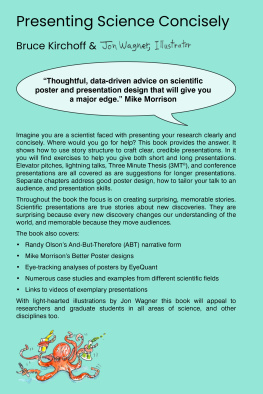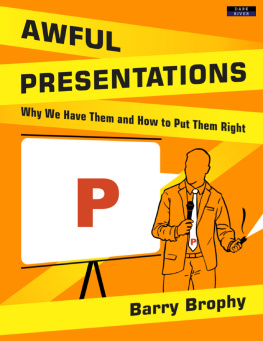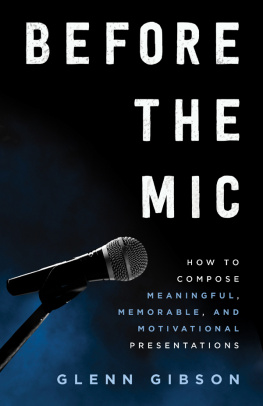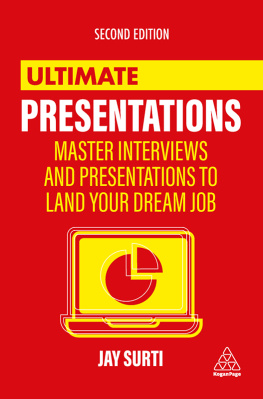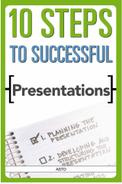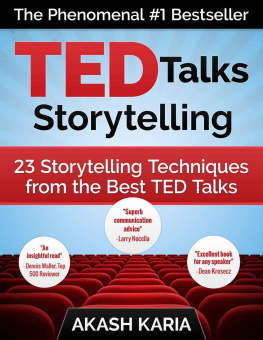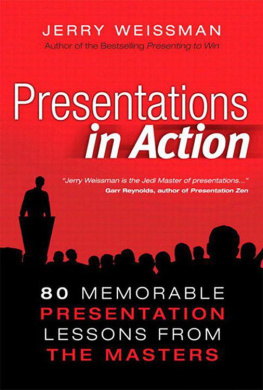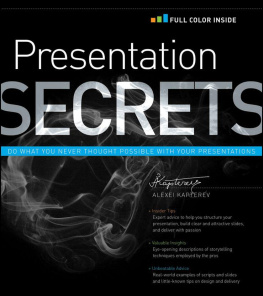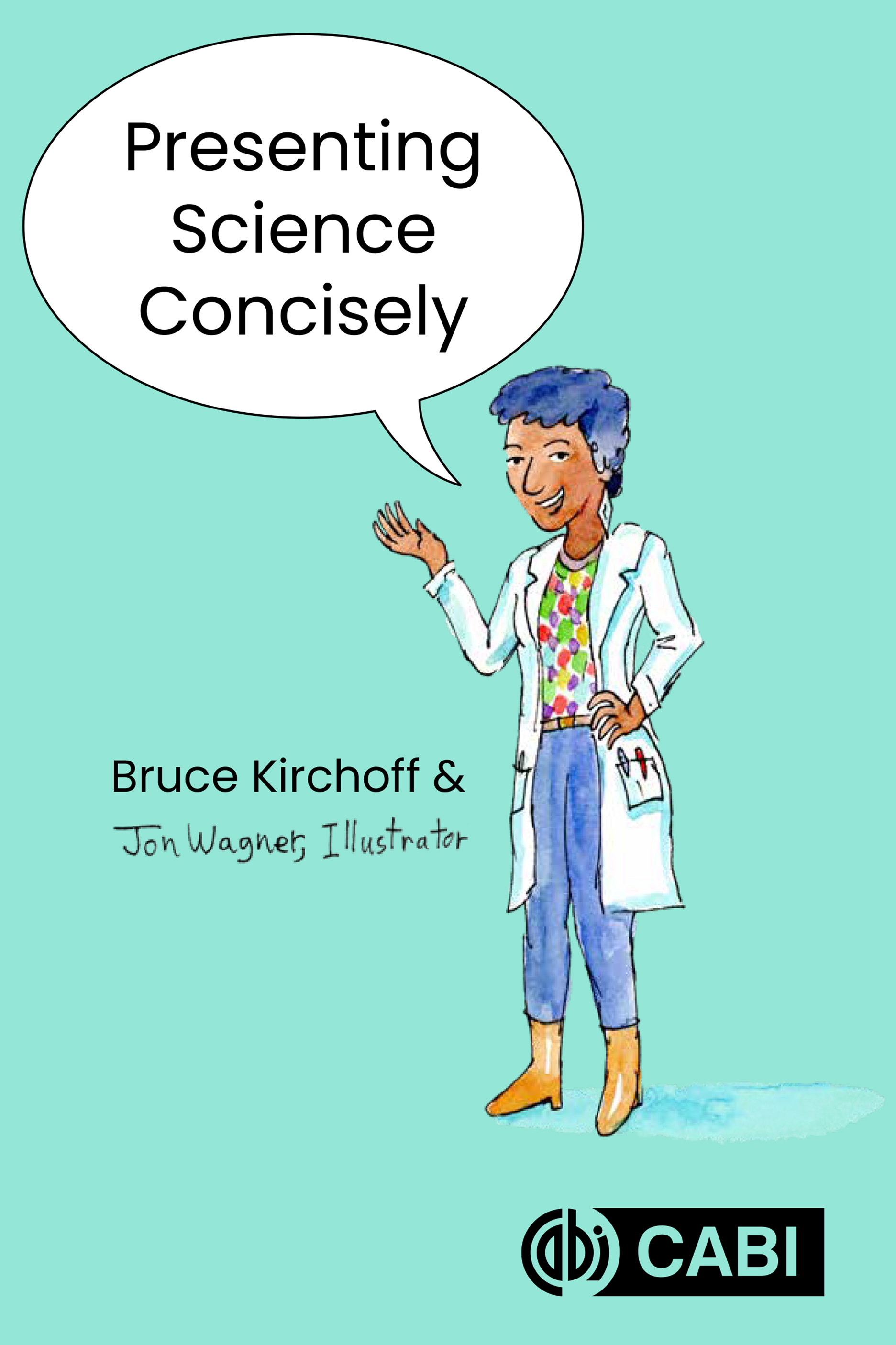
Presenting Science Concisely
Presenting Science Concisely
Dr. Bruce Kirchoff
Department of Biology, University of North Carolina at Greensboro, North Carolina, USA

Biology doodler extraordinaire, Portland, Oregon, USA

CABI is a trading name of CAB International
CABI | CABI |
Nosworthy Way | WeWork |
Wallingford | One Lincoln Street |
Oxfordshire OX10 8DE | 24th Floor |
UK | Boston, MA 02111 |
USA |
Tel: +44 (0)1491 832111 |
Fax: +44 (0)1491 833508 | Tel: +1 (617)682-9015 |
E-mail: | E-mail: |
Website: www.cabi.org |
Bruce Kirchoff 2021. Illustrations Jon Wagner 2021, unless otherwise marked. All rights reserved. No part of this publication may be reproduced in any form or by any means, electronically, mechanically, by photocopying, recording or otherwise, without the prior permission of the copyright owners.
A catalogue record for this book is available from the British Library, London, UK.
Library of Congress Cataloging-in-Publication Data
Names: Kirchoff, Bruce, author. | Wagner, Jon, illustrator.
Title: Presenting science concisely / Bruce Kirchoff ; Jon Wagner, illustrator.
Description: Oxfordshire ; Boston, MA : CABI, [2021] | Includes bibliographical references and index. | Summary: The focus of this book is on shorter presentations, three-minute talks, poster presentations, elevator pitches and advocacy speeches. It begin with best practices for three-minute presentations, then applies the same principles to slightly longer (posters) and shorter (elevator pitches and advocacy speeches) presentations-- Provided by publisher.
Identifiers: LCCN 2021018865 (print) | LCCN 2021018866 (ebook) | ISBN 9781789246995 (paperback) | ISBN 9781789247008 (ebook) | ISBN 9781789247015 (epub)
Subjects: LCSH: Communication in science. | Public speaking. | Poster presentations. Classification: LCC Q223 .K548 2021 (print) | LCC Q223 (ebook) | DDC 501/.4--dc23
LC record available at https://lccn.loc.gov/2021018865
LC ebook record available at https://lccn.loc.gov/2021018866
References to Internet websites (URLs) were accurate at the time of writing.
ISBN-13: 9781789246995 (paperback)
9781789247008 (ePDF)
9781789247015 (ePub)
DOI: 10.1079/9781789246995.0000
Commissioning Editor: Rebecca Stubbs
Editorial Assistant: Emma McCann
Production Editor: James Bishop
Typeset by SPi, Pondicherry, India
Printed and bound in the UK by Severn, Gloucester
Contents
Stories are the universal language. They are the way we create meaning. Read any scientific abstract and you will find a story. But what is a story? Even more importantly, what is a scientific story? This book will answer these questions in the context of short verbal presentations.
we turn to a consideration of your audience and the presentation skills you need to make an impact. You are always addressing a specific audience, in a specific venue, on a specific topic. Failure to take this into account is one of the problems with many scientific presentations.
We have included exercises for the reader throughout the book. These range from putting research into three- and five-act structures in . You will get more out of the book if you do the exercises and apply them to your own presentations.
The author is available for workshops and consultations if you would like to work in more depth. Please contact him at .
Dr. Bruce Kirchoff
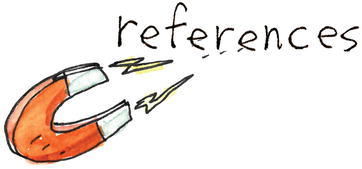
EyeQuant (2009present) EyeQuant. Available at: https://www.eyequant.com/
Heath, C. and Heath, D. (2007) Made to Stick. Random House, New York.
Morrison, M. (2021) Better Scientific Poster. Open Science Framework (OSF), Center for Open Science, Charlottesville, Virginia. Available at: https://osf.io/ef53g/
Olson, R. (2020) The Narrative Gym. Prairie Starfish Press, Los Angeles, California.
The University of Queensland (2008present) 3MT Three Minute Thesis. The University of Queensland, Brisbane, Queensland, Australia. Available at: https://threeminutethesis.uq.edu.au/
This book would never have been written if it had not been for Kim Cuny and Rebecca Stubbs. Kim is the Director of the University Speaking Center at the University of North Carolina at Greensboro and has been wonderfully supportive of every aspect of scientific communication, and of this project. In addition to providing moral support, she wrote the first draft of and contributed important ideas to other chapters. Rebecca is the acquisitions editor at CABI who approached me about writing a book about short scientific presentations. She has been wonderful to work with even when dealing with licensing issues, and that is saying something!
I also want to thank the scientists who consulted about their research and gave me permission to use their work. In addition to the citations in the chapters, Mike Morrison, Dr. Pieter Visscher and Professor David Nash require special mention as does Brian Palermo. They all went out of their way to provide helpful comments on the manuscript. I am especially grateful to Brian Palermo and Mike Morrison for reading and commenting on early drafts of several chapters. I also thank Mike for alerting me to Milan Klwers excellent poster, which I review in .
While writing the chapter on longer presentations I had the opportunity to attend Randy Olsons ABT (And-But-Therefore) Framework Course (.
Writing is time-consuming and can be draining. This book may never have been completed without the support and love of my wife, Mary Kirchoff. She put up with my poor moods, my complaints about lack of progress, and my poor sleep. She encouraged me to exercise, got me skiing, and taught me Pickleball. I am indebted to her on many fronts.
Despite the debt that I owe to the people who have supported this work, final responsibility for the book remains mine, as does responsibility for the errors.
The greatest scientists are always artists as well.
(Albert Einstein cited in )
This book is about science and the art of storytelling. It is a book that builds on the commonality between the scientific process and narrative structure. It will help you become a better communicator. It will help you to embrace your artistic side and tell good stories about your work.
Although stories can be fanciful constructions, they can also relate true events with the artists craft. Creative non-fiction is not fanciful. It adheres to the reality of events as closely as a scientist interpreting her results. This book is creative non-fiction. It uses factually accurate prose to describe scientific research and uses the storytellers sensibility to present these facts. The author, a scientist, is also a storyteller and a teacher of storytellers. He brings this experience to his work on scientific communication. Communication is the process of developing shared meaning. It shapes our experience of the world and of each other (). If we want our work to be taken seriously, we need to learn to be better communicators. This book is about how to do that.
Next page
